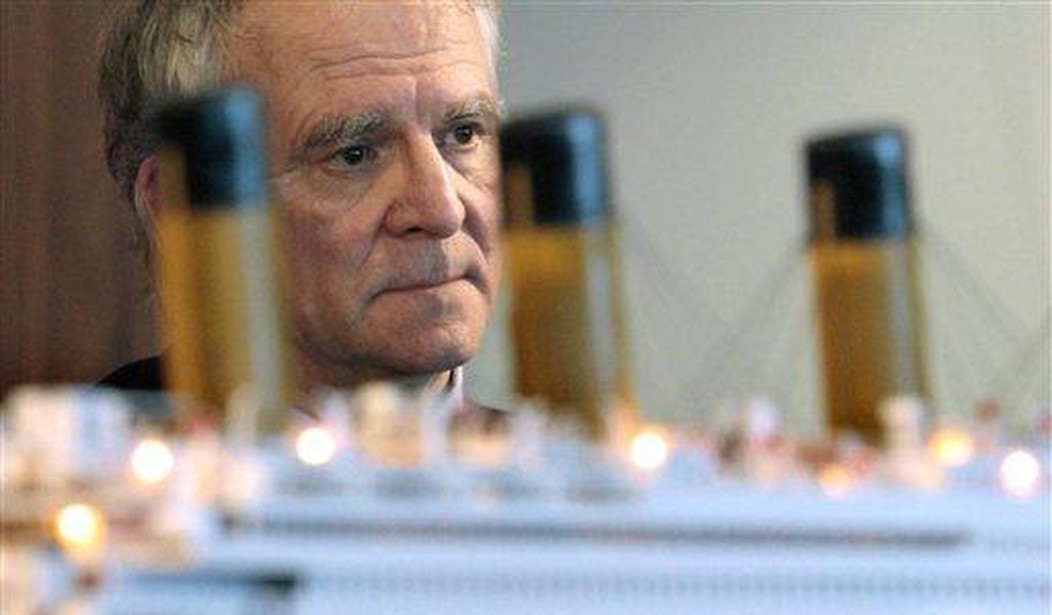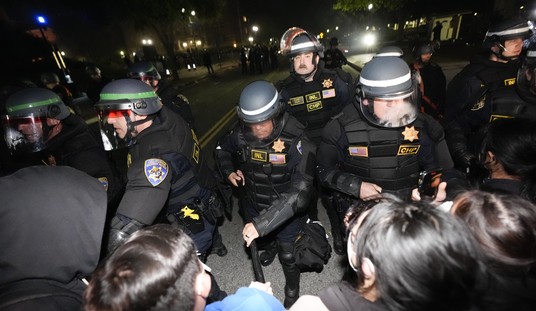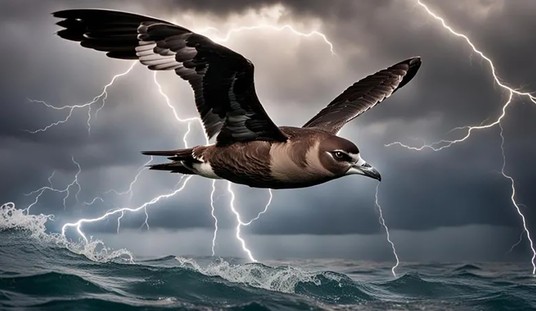The five-day search for the missing Titan, a submersible vessel on an expedition to the Titanic wreckage site came to a close as the critical 96-hour mark was surpassed and debris was discovered. On Thursday, the U.S. Coast Guard held a somber press briefing from Boston to address the discovery of a debris field earlier in the day. Initially, the information provided by the Coast Guard read:
A debris field was discovered within the search area by an ROV near the Titanic. Experts within the unified command are evaluating the information.
Rear Admiral John Mauger reported that the debris was consistent with the missing Titan submersible experiencing a catastrophic loss of the pressure chamber, resulting in an unsurvivable event for all five men aboard the sea capsule.
Mauger said:
In consultation with experts from within the unified command, the debris is consistent with the catastrophic loss of the pressure chamber. Upon this determination, we immediately notified the families. On behalf of the United States Coast Guard and the entire unified command, I offer my deepest condolences to the families. I can only imagine what this has been like for them and I hope that this discovery provides some solace during this difficult time.
“I offer my deepest condolences to the families”
Rear Admiral John Mauger says he hopes the discovery of debris “provides some solace during this difficult time”https://t.co/IIILquUOFJ pic.twitter.com/4Dho7TVYeF
— BBC News (World) (@BBCWorld) June 22, 2023
The five victims lost in the tragedy are :
- Stockton Rush, CEO of Oceangate who Captained every Titan expedition to the Titanic wreckage scene
- Hamish Harding, a 58-year-old British businessman, and undersea explorer who had also done space exploration
- British businessman Shahzada Dawood and his son, Suleman Dawood, 19
- Paul-Henry Nargeolet a 77-year-old Frenchman who was an early pioneer in searching the Titanic wreckage site, often called “Mr. Titanic.”
Shortly before the Coast Guard’s press briefing, OceanGate, which operated the Titan and deep sea explorations, released a statement confirming the suspected loss of life.
CNN confirms: OceanGate released a statement saying they believe the passengers onboard the Titanic expedition submersible have “sadly been lost.” Full statement below pic.twitter.com/9QY5hxkHQI
— Jenn Sullivan (@JennSullivanTV) June 22, 2023
Rear Admiral Mauger expressed gratitude for the joint efforts made on the rescue mission, saying:
The outpouring of support in this highly complex search operation has been robust and immensely appreciated. We are grateful for the rapid mobilization of experts on the underseas search and rescue and we thank all of the agencies and personnel for their role in the response. We’re also incredibly grateful for the full spectrum of international assistance that’s been provided.
He added, “Our most heartfelt condolences go out to the loved ones of the crew.”
The case is being called “incredibly complex,” while the ROVs are to remain on-scene to continue to gather information. What is known is that the ROV identified pieces of the Titan. Rear Admiral Mauger said:
The ROV has been searching and it is highly capable, and we have been able to classify parts of the pressure chamber for the Titan submersible.
Expert Paul Hankin described the discovery and nature of the debris saying:
Essentially we found five different major pieces of debris that told us it was the remains of the Titan. The initial thing we found was the nose cone which was outside of the pressure hull. We then found a large debris field; within that large debris field we found the front end-bell of the pressure haul. That was the first indication there was a catastrophic event.
Shortly thereafter, we found a second smaller debris field; within that debris field, we found the other end of the pressure hull, the aft end bell, which comprised of the totality of that pressure vessel.
When questioned about the possibility of recovering the bodies of the victims the Rear Admiral said:
This is an incredibly unforgiving environment down there on the seafloor and the debris is consistent with a catastrophic explosion of the vessel. We’ll continue to work and continue to search the area down there, but I don’t have an answer for prospects.
The location of sub debris was in an area approximately 1,600 feet from the wreck of the Titanic. An expert described the location as, “off the bow,” and in an area where there is not any wreckage, but has a smooth bottom. It was also reported that the discovery area was consistent with the last known communication. While it is not conclusive, the leading theory is that the implosion happened around the same time that communication with the Titan was lost, about an hour-and-45-minutes into its dive on Sunday.
The USCG Rear Admiral said:
As we’ve been prosecuting this search over the last 72 hours and beyond that, we’ve had sonar buoys in the water nearly continuously and have not detected any catastrophic events when those sonar buoys have been in the water.
This information conveys that USGC and other agencies believe that the event occurred before any time that the ocean was being monitored for sounds through sonar. The earlier “banging” sounds discovered in regular intervals on Tuesday and Wednesday, which gave hope as potential signs of life from the crew, does not appear to be related the Titan, he said:
There doesn’t appear to be any connection between the noises and the location on the seafloor.
Investigations will continue and hopefully provide a more concrete timeline of events while requiring international cooperation. Mauger said:
Right now, again, our thoughts are with the families and making sure that they have an understanding as best as we can provide of what happened and begin to find some closure.
Those are questions that we will collect as much info we can on now, while the governments are meeting and discussing an investigation of this nature might look like.
This is something that happened in a remote portion of the ocean with people from several countries around the world, and so it is a complex case to work through but I am confident that those questions will begin to get answered.
As for the ongoing efforts, Mauger said:
It’s too early for me to talk about an investigation. That’s a decision that’s going to be taken outside of the search efforts that I was leading, but we do have a number of vessels—we have 9 vessels—on the scene right now. We had medical personnel on scene, we had other technicians on scene, and so we will begin to demobilize personnel and vessels from the scene over the course of the next 24 hours. But we are going to continue remote operations on the seafloor, and I don’t have a timeline for when we would intend to stop remote operations on the seafloor, at this point.
The ROV that discovered the Titan’s components is equipped with cameras and sonar, and is capable of operating at a depth of 6,000 meters. It was brought to the rescue effort using two aircraft, including a C-17. The Rear Admiral said:
This was an incredibly complex operation and we were able to mobilize an immense amount of gear to the site in just a really remarkable amount of time given the fact that we started without any sort of vessel response plan for this, or any sort of pre-staged resources.
In closing, Mauger said, “It is a difficult day for all of us, and it’s especially difficult for the families and our thoughts are with the families today. But this was an immense support and we had the right gear on the bottom to find it.”












Join the conversation as a VIP Member